History
Soviet Invasion of Afghanistan
The Soviet Invasion of Afghanistan refers to the military intervention by the Soviet Union in 1979 to support the Afghan communist government against anti-communist insurgents. The invasion led to a prolonged and costly conflict, with the mujahideen resistance ultimately forcing the Soviet withdrawal in 1989. This event had significant geopolitical implications, contributing to the end of the Cold War.
Written by Perlego with AI-assistance
Related key terms
1 of 5
12 Key excerpts on "Soviet Invasion of Afghanistan"
- eBook - ePub
Joining the Fray
Outside Military Intervention in Civil Wars
- Zachary C. Shirkey(Author)
- 2016(Publication Date)
- Routledge(Publisher)
detente , the period of relaxed tensions between the Western and Eastern blocs that characterized much of the 1970s. It is also often remembered as one of many factors which strained the Soviet economy and ultimately helped cause the Soviet Union’s collapse, just over a decade later. Neither factor, however, is of central concern for the purposes of this section. Instead, the Soviet invasion provides an interesting look at why a great power would choose to intervene in a civil war of a neighboring state to install a new government, even though the prior government was ostensibly an ally. It will be argued that the Soviets invaded because of information revealed about the deteriorating state of their proxy’s political and military position and because the Afghan leadership could not credibly commit to remain a loyal Soviet proxy.Soviet-Afghan Relations through the Saur Revolution
In order to fully grasp Soviet motives for invading in 1979 it is first necessary to understand the relationship that had developed between Afghanistan and the Soviet Union since World War Two. The Soviets had sought influence in Afghanistan since shortly after the Soviet Union’s founding. However, despite some limited connections, including a non-aggression pact signed in 1921, Soviet influence in Afghanistan did not become a major factor until after the death of Joseph Stalin in 1953.2 Stalin had not been particularly interested in extending Soviet influence into less developed countries and had thus limited Soviet efforts in places like Afghanistan.3 That same year Mohammed Daoud, a relative of Mohammad Zahir Shah, the king of Afghanistan, became Afghan prime minister. This was equally as important a turning point for Afghan-Soviet relations as Stalin’s death. Daoud favored moving toward a planned economy and obtaining Soviet aid to push his country forward in terms of economic development.4 This, combined with the Soviets’ new interest in developing states, quickly led to closer bilateral ties. The Soviets began providing economic aid to Afghanistan in 1954. Military aid and training began in 1955. Over the course of a decade, a total of $275 million in aid was delivered. Additionally, several important trade agreements were struck and the Soviets built three air bases and a natural gas pipeline in Afghanistan.5 Thus, aid continued to grow in the late 1960s and in the 1970s. By 1978, the total had reached $1.265 billion.6 Though not the only source of aid—the US provided $532.87 million from 1949 to 1979—the Soviets were by far the largest single source of aid.7 The Soviets also backed Afghanistan in its diplomatic crisis with Pakistan over Pashtunistan, the area along both sides of the Afghan-Pakistani border, something the US could not do without jeopardizing its own relations with Pakistan.8 - eBook - ePub
Political Developments in Afghanistan
Implications for India
- K N Tennyson(Author)
- 2012(Publication Date)
- KW Publishers(Publisher)
20The Soviet Invasion of Afghanistan has been widely debated; some scholars and political analysts perceived that the Soviets invaded Afghanistan not so much for oil and influence in the Persian Gulf, but to contain the instability in Afghanistan. Kuldip Nayar, a prominent Indian journalist and writer, expressing one such view, wrote,It was wrong to say that the Soviet invasion was part of a grand strategy to control Middle East oil supplies or to reach water ports…Moscow’s action sprang from “a policy essentially defensive in inspiration;” it sought stability of its frontiers and not adventures abroad. The Soviet Union had ample sources of energy (oil in eastern Siberia); it had only to develop them.21Arvind Gupta, an Indian career diplomat and strategic security analyst too noted that the Soviet Union did not invade Afghanistan “owing to the historic drive towards warm water ports of the Indian Ocean” or the Persian Gulf, but to contain the instability in Afghanistan.22 Whereas others like S.K. Bain are of the view that the Soviet Invasion of Afghanistan was “motivated by a larger aim of turning Afghanistan into a satellite state on a permanent basis. And this larger aim, in turn, is for achievement of the strategic and technical goals of the ambitious superpower— the Soviet Union.”23 Bain’s observation is supported by the fact that the Soviet advisers and military personnel had “permeated” almost every department of the Democratic Republic of Afghanistan (DRA), after the DRA took over the political affairs of the country in 1978 (a year before the actual Soviet invasion took place). A recent publication of the Russian General Staff has pointed out that “Soviet military advisers were found in each battalion of the DRA Armed Forces. A battalion of the Soviet Special Forces (Spetsnaz) provided security for the DRA President [Nur Mohammad Taraki].” It further stated the Soviet Union not only helped in securing the official residence of the Afghan President, but a “Soviet squadron of Central Asian pilots wore Afghan Air Force uniforms and flew aircraft with Afghan tail markings throughout the country.”24 - eBook - PDF
Afghanistan
Aid, Armies and Empires
- Peter Marsden(Author)
- 2009(Publication Date)
- I.B. Tauris(Publisher)
The Soviet military intervention had the effect of strengthening the resistance. In both Pakistan and Iran, but particularly in Pakistan, the refugee populations served as a foundation for insurgency movements into Afghanistan. This cross-border insurgency was also, as noted above, able to draw support from the population that had been able to remain in Afghanistan. In a situation where the efforts of the Government and the Soviet forces to win over elements of the population were of very limited success, the Soviet army thus became bogged down in a guerilla war which it always struggled to address. By 1985, the Soviet leader, Mikhail Gorbachev, was already considering an eventual withdrawal of Soviet forces from Afghanistan in the context of efforts to radically reform the Soviet machinery of government. He was concerned that the bureaucratic inertia created by the Brezhnev years had brought the economy to a T HE S OVIET M ILITARY I NTERVENTION A FGHANISTAN – A ID , A RMIES AND E MPIRES 56 state of crisis which needed drastic solutions. In seeking to free up the command economy, he recognized that the Afghan venture was one which could not be afforded, either economically or politically. It also constrained his efforts to build up his relationship with the USA, in the hope of attracting investment into the Soviet economy. However, it is also likely that increasing public discontent over the war, and the casualties that it was creating, was influencing the opinion of the Soviet Government. Those who fought in the Afghan war were returning disillusioned and angry. This would have fed into the concerns felt by President Gorbachev. It is therefore likely that internal factors within the Soviet Union were of greater significance than the strength of Afghan resistance in influencing the Soviet decision to withdraw. - eBook - ePub
Agents of Altruism: The Expansion of Humanitarian NGOs in Rwanda and Afghanistan
The Expansion of Humanitarian NGOs in Rwanda and Afghanistan
- Katrina West(Author)
- 2017(Publication Date)
- Routledge(Publisher)
The background to the Soviet invasion is much more complex than what the final events suggest. The country was split into two parts: modern and traditional, state and society; Kabul symbolized the state, rural areas the society, and the state had little authority in the eyes of the rural masses. As the rulers in Kabul depended on foreign patrons rather than on popular support, Afghanistan became a ‘rentier state’: a state which was largely funded by foreign aid and whose domestic power relationships depended on external patrons (Rubin, 1995a, pp.62ff).International ReactionThe Soviet invasion created enormous tension in East-West relations. Because the international climate had cooled after years of détente, it occurred at a crucial point in superpower relations. The reaction of the USA towards the invasion was strongly critical. In the State of the Union speech in January 1980, President Carter described the invasion as the most serious threat to world peace since the Second World War (Grasselli, 1996, p. 121). But, despite sharp condemnations, the Carter administration was reluctant to take any concrete measures against the invasion: the USA increased aid to Pakistan, proclaimed a grain embargo and boycotted the Moscow Olympics – but not much else.The invasion threatened Western interests in the oil-rich Persian Gulf region. Since Afghanistan was a multiethnic focal point of three geographical and cultural areas, sharing a border with the Soviet Union in the north, with Pakistan in the northeast, and Iran in the west, it had a critical geopolitical position. The country had been an arena of great power rivalry for a long time; in the 19th century, it had served as a setting for Anglo-Russian rivalry.The Soviet invasion caught the attention of the international media and remained a major news story throughout the decade. It had all the characteristics of a major news story: it was about David fighting Goliath; it had a Cold War dimension; and it seemed, thanks to the cultural magic of Afghanistan, like an exotic land from a Kipling novel. Foreign journalists arrived in the region, and covert trips inside Afghanistan became a new form of boyish adventurism. News stories of a mysterious and mountainous country combating the Evil Empire spilled out into the Western media. - No longer available |Learn more
- (Author)
- 2014(Publication Date)
- College Publishing House(Publisher)
________________________ WORLD TECHNOLOGIES ________________________ Chapter 2 Soviet War in Afghanistan The Soviet War in Afghanistan was a nine-year conflict involving the Soviet Union, supporting the Marxist-Leninist government of the Democratic Republic of Afghanistan at their own request against the Mujahideen Resistance when on December 27, 1979, 700 Soviet troops dressed in Afghan uniforms, including KGB and GRU special force officers from the Alpha Group and Zenith Group, occupied major governmental, military and media buildings in Kabul, including their primary target—the Tajbeg Presidential Palace. The mujahideen found other support from a variety of sources including the United States, United Kingdom, Saudi Arabia, Pakistan, Egypt and other Muslim nations through the context of the Cold War. The initial Soviet deployment of the 40th Army in Afghanistan began on December 24, 1979 under Soviet leader Leonid Brezhnev. The final troop withdrawal started on May 15, 1988, and ended on February 15, 1989 under the last Soviet leader Mikhail Gorbachev. Due to the interminable nature of the war and the damage it is perceived to have caused the USSR's international standing and military morale to deteriorate, and thus the conflict in Afghanistan has sometimes been referred to as the Soviet Union's Vietnam War . Background Russian military involvement in Afghanistan has a long history, going back to Tsarist expansions in the so-called Great Game between Russia and Britain. This began in the 19th century with such events as the Panjdeh Incident, a military skirmish that occurred in 1885 when Russian forces seized Afghan territory south of the Oxus River around an oasis at Panjdeh. This interest in the region continued on through the Soviet era, with billions in economic and military aid sent to Afghanistan between 1955 and 1978. - eBook - PDF
Secret Wars
Covert Conflict in International Politics
- Austin Carson(Author)
- 2018(Publication Date)
- Princeton University Press(Publisher)
238 7 The War in Afghanistan (1979–1986) During the 1980s, Afghanistan played host to interventions by the United States and Soviet Union. Long a peripheral concern for Washington and Moscow, a pro-communist coup in 1978 thrust Afghanistan into the center of the Cold War rivalry. A growing insurgency eventually forced Soviet leaders to intervene militarily, first covertly and then overtly. In response, Washington worked with a local partner, Pakistan, to provide significant covert aid to Afghan rebels. During nine years of occupation, the Soviets maintained an occupation force of more than 75,000 combat troops, with 600,000 military personnel spending time in the country at least once. So-viet leaders also provided thousands of civilian, intelligence, and military advisors, suffered a total of 13,000 dead and more than 40,000 wounded, and spent in excess of 10 billion rubles.1 This chapter assesses how concerns over the risk of escalation to a wider regional war influenced decisions about intervention and how to react to detected covert involvement. This conflict plays a useful role in the book’s overall research design by allowing an initial assessment of two generalizability questions. First, the 1 Overall data from Raymond L. Garthoff, Detente and Confrontation: American-Soviet Rela-tions from Nixon to Reagan , Revised (Washington, DC: Brookings Institution Press, 1994), 989– 90, 1021–23; Artemy Kalinovsky, Long Goodbye: The Soviet Withdrawal from Afghanistan (Cam-bridge, MA: Harvard University Press, 2011), 1, 42. THE WAR IN AFGHANISTAN 239 war in Afghanistan was fought without a plausible scenario for escalation to global conflict. Instead, the specter of a regional war—specifically encom-passing Pakistan—was the salient and large-scale escalation scenario that dominated deliberations about intervention form and how to handle intel-ligence about covert aspects of the war. - eBook - ePub
No Miracles
The Failure of Soviet Decision-Making in the Afghan War
- Michael R. Fenzel(Author)
- 2017(Publication Date)
- Stanford Security Studies(Publisher)
65Ultimately, we can say that the Soviet decision to invade Afghanistan centered on political risk, not military difficulty. The decision focused on political instability in Afghanistan, and the threat posed by it did not deviate too far from communist norms. Inclusive policy discussions among civilian and military leaders might have helped the Soviets to understand the tremendous difficulties associated with invading the country, and possibly could have led to an increased commitment of forces at the outset. However, narrow input by military experts and Afghanistan hands prior to the ultimate decision prevented not only thorough consideration of whether the invasion was necessary but also discussion about the longer-term consequences of intervention. By late 1979, the Troika did not want to suffer through further deliberations or deal with the inconvenient military truths about the difficulties associated with an invasion. They simply wanted to get on with it and be rid of Amin.The Invasion of AfghanistanThe 1979 decision to invade Afghanistan to prevent the destruction of a socialist-oriented regime did signify a broad change in Soviet foreign policy. The Soviet leaders’ need to act was so great that they would probably have invaded even if they had given deep consideration to the resistance they would encounter. The Soviet invasion was not part of a calculated ploy to destabilize the Persian Gulf or Central Asia, but the culmination of actions designed to meet the immediate crisis.66The objective of the invasion was to ensure the new Afghan communist government (PDPA) got off to the right start, after which Soviet forces would leave without having to militarily confront the Islamic opposition. The Troika planned to accomplish this by ousting Amin, putting Babrak Karmal in power, and providing advice and assistance that would consolidate communism in accordance with the Brezhnev doctrine.67 The invasion plan included both overt and covert elements and initially only required assets already in place near the Afghan frontier. The PDPA government requested the overt deployment of four divisions of armored troops. The covert element focused on Amin’s removal and Karmal’s installation.68 - No longer available |Learn more
- (Author)
- 2014(Publication Date)
- University Publications(Publisher)
________________________ WORLD TECHNOLOGIES ________________________ from disease and accidents 53,753 Wounded 311 Missing Afghan Government: Killed: 18,000 Civilians (Afghan): Around 1,000,000 (Soviet) 100 The Soviet War in Afghanistan was a nine-year conflict involving the Soviet Union, supporting the Marxist-Leninist government of the Democratic Republic of Afghanistan at their own request against the Mujahideen Resistance when on December 27, 1979, 700 Soviet troops dressed in Afghan uniforms, including KGB and GRU special force officers from the Alpha Group and Zenith Group, occupied major governmental, military and media buildings in Kabul, including their primary target—the Tajbeg Presidential Palace. The mujahideen found other support from a variety of sources including the United States, United Kingdom, Saudi Arabia, Pakistan, Egypt and other Muslim nations through the context of the Cold War. The initial Soviet deployment of the 40th Army in Afghanistan began on December 24, 1979 under Soviet leader Leonid Brezhnev. The final troop withdrawal started on May 15, 1988, and ended on February 15, 1989 under the last Soviet leader Mikhail Gorbachev. Due to the interminable nature of the war and the damage it is perceived to have caused the USSR's international standing and military morale to deteriorate, and thus the conflict in Afghanistan has sometimes been referred to as the Soviet Union's Vietnam War . Background Russian military involvement in Afghanistan has a long history, going back to Tsarist expansions in the so-called Great Game between Russia and Britain. This began in the 19th century with such events as the Panjdeh Incident, a military skirmish that occurred in 1885 when Russian forces seized Afghan territory south of the Oxus River around an oasis at Panjdeh. This interest in the region continued on through the Soviet era, with billions in economic and military aid sent to Afghanistan between 1955 and 1978. - eBook - PDF
- Linda Racioppi(Author)
- 1994(Publication Date)
- Cambridge University Press(Publisher)
Thus, relations with the USSR (which in all cases had been generally favora- ble) and its occupation of Afghanistan were certainly of less pressing concern than domestic problems. While the Soviet Invasion of Afghanistan did not shake the foun- dations of Soviet policy in South Asia, it clearly had negative con- sequences on Soviet bilateral relations with the countries of the region. At times those consequences could be seen less in obvious measures of economic or military relations (e.g., arms shipped, trade turnover) than in the general tone of Soviet diplomatic and political relations. This floundering of Soviet status in the region had to do not only with the security/balance of power concerns of the regional great powers (India and Pakistan) but also with the perception by all countries of the region that the USSR, like the US in Diego Garcia, was now a military force that had to be reckoned with in South Asia. The USSR could no In the wake of Afghanistan 121 longer argue credibly in Asian fora that the US was the main protagon- ist in militarizing the subcontinent and the Indian Ocean. For the USSR then, in the 1980s as in the 1970s, the task was to try to overcome the specter of Afghanistan and to maintain friendly relations with countries of a region seemingly plagued by perpetual domestic instability. If the invasion made that more difficult, it certainly did not make it impossible. The USSR had to be an astute observer of domestic developments in the region, and it would have to adjust its policies in the region to the constraints of South Asian politics. The USSR and Afghanistan. The already large number of Soviet advisors in Kabul was substantially increased after the intervention. 52 As Henry Bradsher has pointed out: Three levels of authority existed in Kabul and the limited areas of Afghanistan that it controlled ... - eBook - ePub
Afghanistan War
A Documentary and Reference Guide
- Ryan Wadle(Author)
- 2018(Publication Date)
- Greenwood(Publisher)
The Soviets installed in power a new Afghan communist leader, Babrak Karmal, and hoped to shore up the Democratic Republic of Afghanistan (later renamed the Republic of Afghanistan) military to the point where it could control the insurgency. What was clearly perceived by the insurgents as a foreign invasion, however, further inflamed the situation. What had earlier been a disjointed “Jihad” (Holy War) against the communist government in Kabul, now took on greater urgency and served as the strongest unifying factor for the insurgents. As one Soviet news commentator remarked in the newspaper IZVESTIYA in late 1988, “The Afghan people now had invading infidels against whom to unite.” Due to this, and the continuing ineffectiveness of the Afghan Army, the Soviets were compelled to go over to the offensive. But no Soviet textbook had prepared them for the tactical problems of counterinsurgency (COIN) warfare.While the insurgency reflected the classic threat—no fixed battle lines; low technology insurgent warfare; small, short duration insurgent targets—several factors gave the Soviet campaign in Afghanistan a unique set of characteristics. For one, the Kremlin obviously imposed limitations on the size of the Soviet force deployment. There would be no significant build-up in force strength. The Soviet name for their forces in Afghanistan, “Limited Contingent,” was as real as it was propagandistic. This had a significant effect on the conduct of operations: insufficient forces were available to expand appreciably 40th Army’s area of physical control, or to identify and attack many insurgent targets at the same time. When major operations were conducted in one part of the country, forces had to be drawn from other areas, leaving those areas vulnerable to insurgent activities. Moreover, early in the war, especially after Brezhnev’s death, Soviet leaders apparently assigned a high priority to minimizing personnel and equipment losses. This in turn caused Soviet operations to exhibit an unusual degree of caution and lack of boldness when employing troops at the tactical level. - eBook - ePub
- Dr. Robert F. Baumann(Author)
- 2015(Publication Date)
- Tannenberg Publishing(Publisher)
Indeed, the Soviet military presence may have been a liability to the Soviet cause. Soviet journalist A. Bovin, writing in Izvestiia in December 1988, admitted as much:To the Soviets' credit, once this recognition dawned on them, they were able to reverse their policy.. . . the overall effect of the presence of Soviet troops and their participation in combat operations clearly proved negative. We ourselves handed the counter-revolutionary forces some powerful means of influencing public perceptions. The foreign intervention stirred patriotism, and the appearance of “infidels” spawned religious intolerance. On such a field, even a tie would have been miraculous.{464}Bibliography
Memoirs and Documents
Gorbachev, M. S. Perestroika i novoe myshlenie dlia nashei strany i dlia vsego mira . Moscow: Politizdat, 1988.Guensberg, Gerald, trans. Soviet Command Study of Iran . Moscow, 1941. Arlington, VA: SRI International, 1980.Vo imia velikoi tseli. Leningrad: Lenizdat, 1988.Volkov, Y. The Truth About Afghanistan: Documents, Facts, Eyewitness Reports . Moscow: Novosti Press Agency, 1980.Zvezdy slavy boevoi na zemle Afganistana . Moscow: Politizdat, 1987.Books
Alexiev, Alex. Inside the Soviet Army in Afghanistan . Santa Monica, CA: Rand, 1988.Alexiev, Alex, and S. Enders Wimbush. Ethnic Minorities in the Red Army, Asset or Liability ? Boulder, CO: Westview Press, 1987.Amin, Tahir. Afghanistan Crisis: Implication and Options for Muslim World, Iran and Pakistan . Islamabad, Pakistan: Institute for Policy Studies, 1982.Amstutz, J. Bruce. Afghanistan: The First Five Years of Soviet Occupation . Washington, DC: National Defense University, 1986.Arnold, Anthony. Afghanistan: The Soviet Intervention in Perspective . Stanford, CA: Hoover Institution Press, 1986.Blank, Stephen. Operational and Strategic Lessons of the War in Afghanistan . Carlisle, PA: Strategic Studies Institute, 1991.Bocharov, Gennadii. Byl i videl . . . Afganistan 1986/87 god. Moscow: Politizdat, 1987.Bonner, Arthur. Among the Afghans - eBook - ePub
A Military History of Afghanistan
From the Great Game to the Global War on Terror
- Ali Ahmad Jalali(Author)
- 2017(Publication Date)
- University Press of Kansas(Publisher)
Loya Jirga (Grand Assembly) authorized the government to get military assistance from any available source. Consequently, the Afghan government was forced to reorient its policy toward its “great northern neighbor.” A quarter of a century later, Afghanistan was the only country in the region that fought a bloody war against Soviet Communism and forced the Soviet army out. It was also in Afghanistan that the United States waged the longest covert war against the Soviet Union in the region. Less than a half-century later, Afghanistan was the only country in the region from which the United States was attacked, forcing the United States to invade Afghanistan.Soviet Military Penetration
The Afghan government called a Loya Jirga in November 1955 to make vital national decisions on the issue of Pashtunistan and on enhancing the Afghan army’s capacity of fighting foreign invasion. The gathering authorized the government to pursue the issue of Pashtunistan and acquire modern weapons and military hardware from any available sources. Just about three weeks after the Loya Jirga of 1955, top Soviet leaders, Party Secretary General Nikita Khrushchev and Prime Minister Nikolai Bulganin, visited Kabul from December 16 to December 18. The Soviet leaders voiced support for Afghanistan’s position on Pashtunistan and offered all-round assistance to Afghanistan, including a credit of 100 million dollars for economic development. Later Moscow also announced an unspecified range of military assistance, which over the years increased incrementally.In 1955, Afghanistan received approximately 25 million dollars’ worth of military hardware. In addition, the Soviet bloc also began the construction of military airfields in Bagram, Mazar-i-Sharif, and Shindand. By the 1960s, Soviet assistance became apparent in the structure, armament, training, and command and control arrangements of the military. During the next 10 years Afghanistan adopted the Soviet military training and operational military doctrine system that required the translation and adaptation of hundreds of Soviet armed forces tactical and field manuals, technical pamphlets, textbooks, and methodologies of training for military operations. Instead of fitting the new armament and equipment into the existing army and air force structure, the very organization of the armed forces was changed to make it compatible with the new Soviet-style doctrine in tactics, operational art, and strategy. Soviet assistance enabled Afghanistan to improve the structure, armament, training, and command and control system of the armed forces. The strength of the military in the 1960s reached 98,000, including 90,000 in the army and 8,000 in the air force. The reserve in the mid-1970s was estimated at 150,000 to 200,000. The army was organized into three army corps and four separate divisions, three armored brigades, two mountain brigades, one artillery brigade, and other combat support and service formations. The air force had 250 combat, transport, and training aircraft and helicopters. The air force regiments were based in Kabul, Bagram, Shindand, and Mazar-i-Sharif, and some units were also based in Jalalabad. The armed forces also included a 21,000-strong gendarmerie organized in battalions and regiments and a 25,000-strong public works force organized in companies, battalions, and construction units.
Index pages curate the most relevant extracts from our library of academic textbooks. They’ve been created using an in-house natural language model (NLM), each adding context and meaning to key research topics.
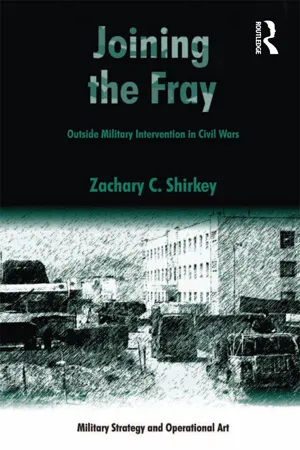
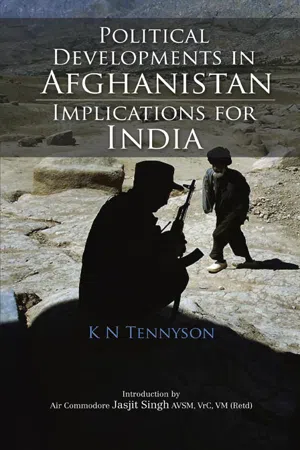
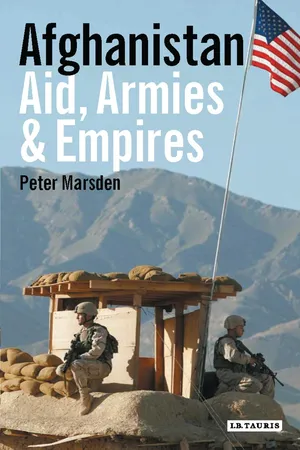
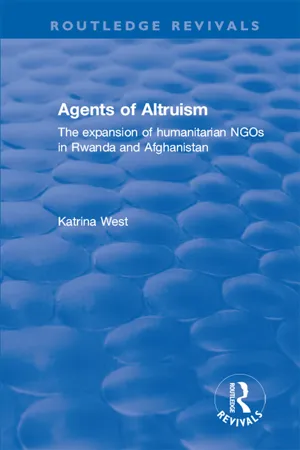
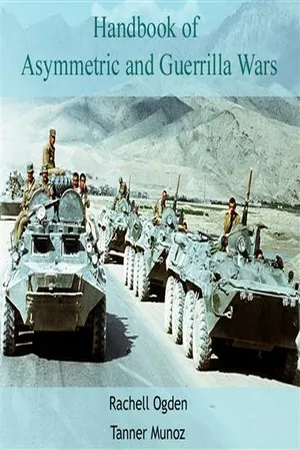

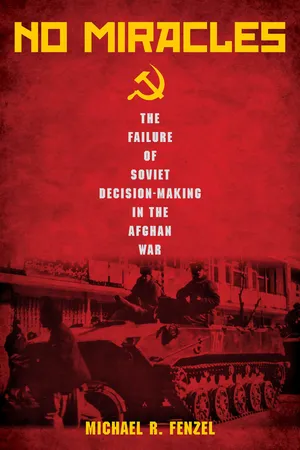

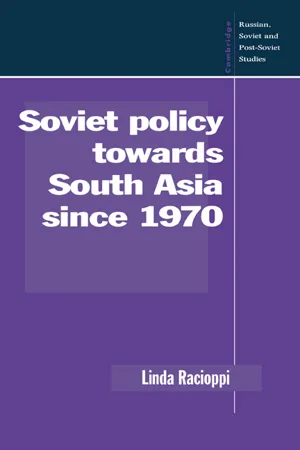
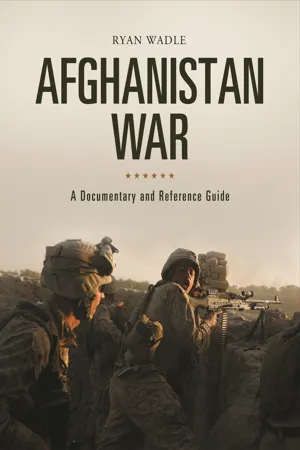
![Book cover image for: Russian-Soviet Unconventional Wars in the Caucasus, Central Asia, and Afghanistan [Illustrated Edition]](https://img.perlego.com/book-covers/3021258/9781782899655_300_450.webp)
